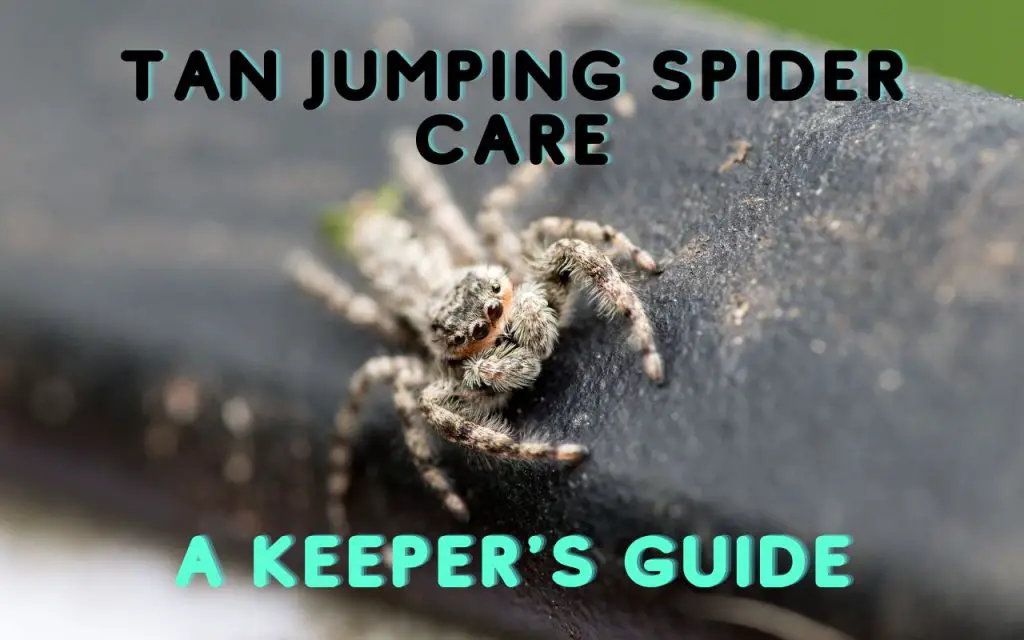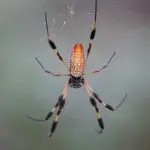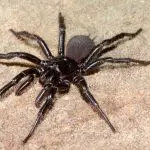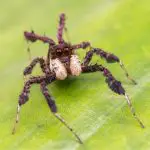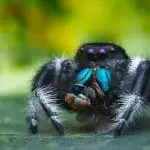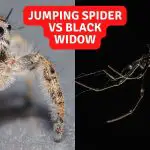The tan jumping spider derives its common name from its yellowish-brown and tan coloration. They are native to North America and common across Mexico to Canada. A mature tan spider’s length ranges between 10 and 13 mm, with the females slightly bigger than the male.
Caring for a tan jumping spider properly requires understanding and providing the right natural habitat conditions. These include food and enclosure conditions. Moreover, it is advisable to handle these creatures with absolute care.
In this article, I will talk about how to take care of Platycryptus undatus regarding the following aspects:
- Jumping spider enclosure
- Temperature requirements
- Diet and feeding
- Water and humidity
- Tan Jumping Spider diet
- Tan Jumping Spider male vs female
- Tan Jumping Spider poisonous
- Lifespan
- Temperament and handling
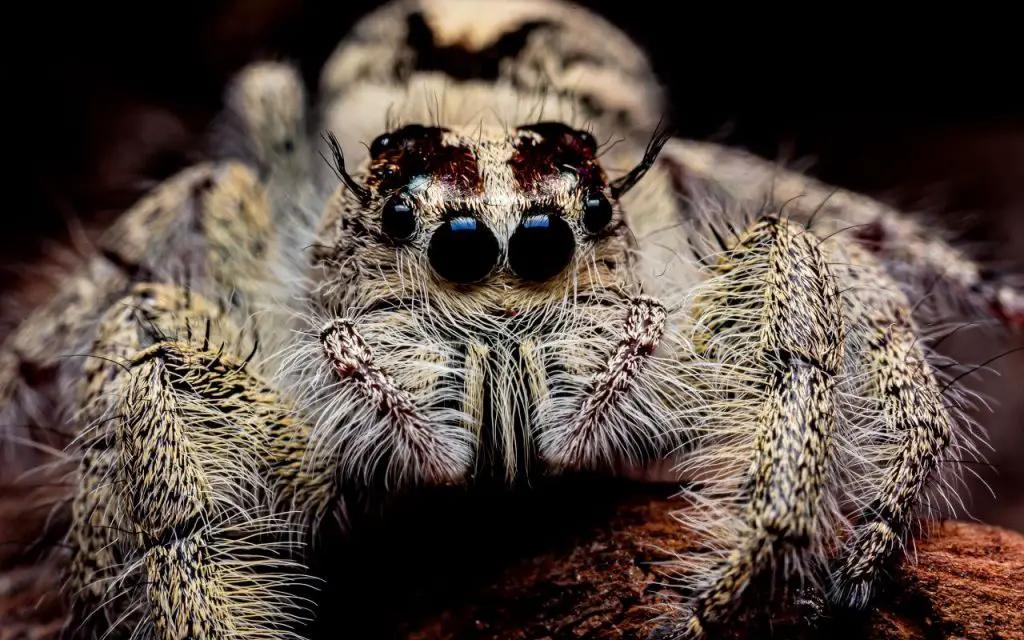
How to take care of Platycryptus undatus
If you want to care for your jumping spider pet successfully, know their natural habitat conditions. That way, you can provide comfortable conditions to thrive without straining with changing environment.
1.Tank Set up and Requirements
Size and space are essential aspects when it comes to your tan jumper’s tank. Experts recommend a 5-gallon tank meshed at the top for proper air circulation and to prevent soaking. In addition, fill the tank with some non-toxic substrate such as terrarium soil mix or coconut coir.
Platycryptus undatus prefers a neutral pH and up to ten hours of bright light per day. Again, it would be best to secure the lid well to prevent your spider from escaping. When it comes to light, just remember that you mustn’t place the enclosure in direct sunlight, as this will quickly cause it to overheat.
2. Give the Right Food
These spiders feed on insects but can eat nectar, berries, and pollen. Feed it with tiny insects like crickets and fruit flies. For young spiders, flightless fruit flies make an easier meal, and appropriately-sized one. Remember, food should not be more than 1.5 times the size of your spider.
Like most Jumping Spiders, this species will occasionally accept mashed-up fruit, but in my experience this is hit-or-miss. Some will and some won’t, but it certainly doesn’t hurt to try. For those that will accept fruit, you usually have to put it literally right in front of them.
Tan Jumping Spider Enclosure
Setting up a home for your jumper requires careful consideration. The size of the container you pick depends on how often you plan to take your spider out.
For instance, a smaller container will be okay if you have time to let it out daily. However, if your pet will stay in the cage for long hours, it is advisable to pick a cubic-foot container or larger.
Confining your spider in a tiny space denies it a chance to exercise, leading to a weak jumper that will likely die earlier than expected.
Furthermore, ensure adequate ventilation in your spider’s container, but avoid large holes as the spider can escape.
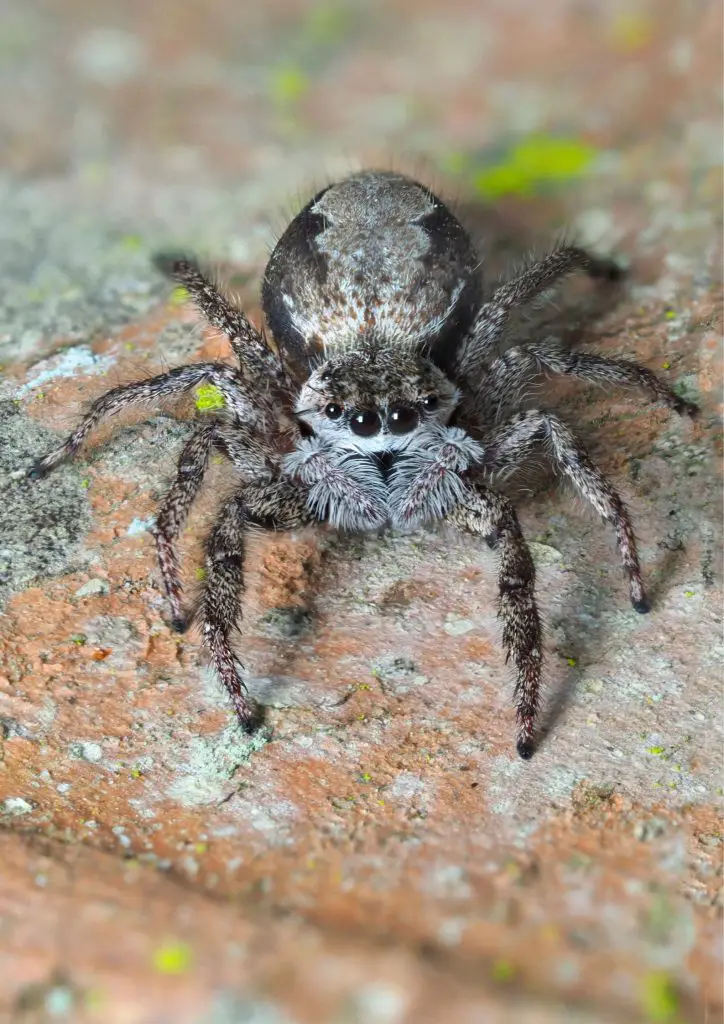
Temperature
A tan jumping spider thrives best in temperatures between 75 and 83 degrees F. They also prefer a low humidity not exceeding 50%. Providing this temperature in your spider’s enclosure is one way to keep them comfortable.
Diet and Feeding
Jumping spiders feed on insects, mealworms, and other smaller spiders. Thus, it is advisable to refill the food tray with fresh food daily to ensure that your pet gets a proper diet.
Moreover, it would be best to provide an insect or worm every two to three days, though some spiders can go up to a week without food. In addition, avoid giving your spider large insects.
Again, jumping spiders do not appreciate ants since they pinch them, injecting formic acid into their bodies. When feeding your spider live prey, drop it into the tank and let the jumper do its work.
Water and Humidity
A jumping spider lives best in average to high humidity, between 60 to 65%. These creatures breathe through the book lungs on their abdomen. Therefore, it would be best to put only drops of water for your pet. A lot of water can suffocate the spider when it reaches its abdomen.
Suppose you have a misting bottle; use it to apply a small mist squirt on the cage’s sides every few days. If not, drip a few drops in the enclosure through the sides. Avoid puddles, lest your pet drowns.
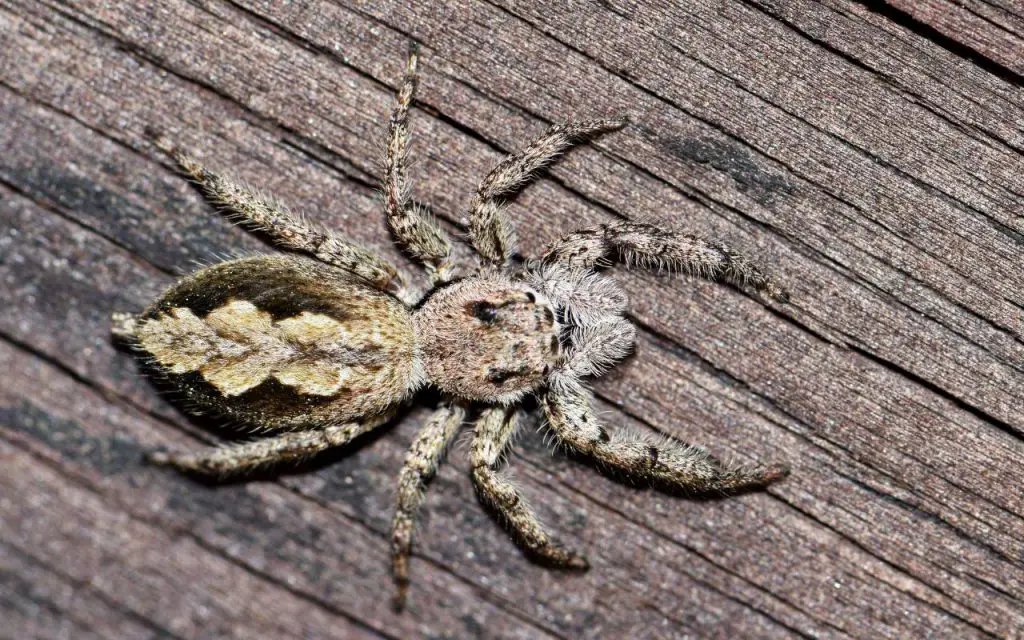
Tan Jumping Spider Diet
Besides the regular jumping spider’s predatory diet, a tan jumping spider also eats bits of apples, berries, and bananas. They can also feed on nectar and pollen, though not their favorite.
Therefore, consider availing a well-balanced diet of live insects for your pet to “hunt” and supplementary foods like the fruit additions. A god diet is a significant requirement for your spider’s health and longer life.
Tan Jumping Spider Male Vs Female
A mature male Platycryptus undatus is smaller than the female counterpart. When keeping more than one tan jumpers, you would better have separate tanks. While a male and female can cohabitate, keeping same sex tan jumpers will lead to a serious fight to death.
However, you must also be careful to provide sufficient food when you put a female and male together.
Tan jumpers have a complex mating where the male creates rhythmic vibrations to attract the female. Once the courtship is over, the female designs an egg sac where it lays its eggs.
Tan Jumping Spider Poisonous
A tan jumping spider is not poisonous, though sometimes it can bite in defense. It is a friendly creature that you can handle and keep as a pet.
However, if it bites you, you may experience mild symptoms like itching, redness, or swelling. If these symptoms persist, seek medical attention as you may be allergic to the otherwise harmless venom.
Lifespan
A tan jumper has a generally short lifespan of about one to two years. Like other jumping spider species, the female lives slightly longer than its male counterpart.
However, their population remains relatively high as they mature fast and reproduce for up to three times in a year. A tan jumper’s life cycle consists of egg, spiderling, juvenile, and adult stages.
Temperament and Handling
A tan jumper is relatively gentle and calm, but it can be shy. If you scare them or they feel threatened, it may try to hide. While they are friendly with humans, they can be aggressive regarding sharing space with other animals.
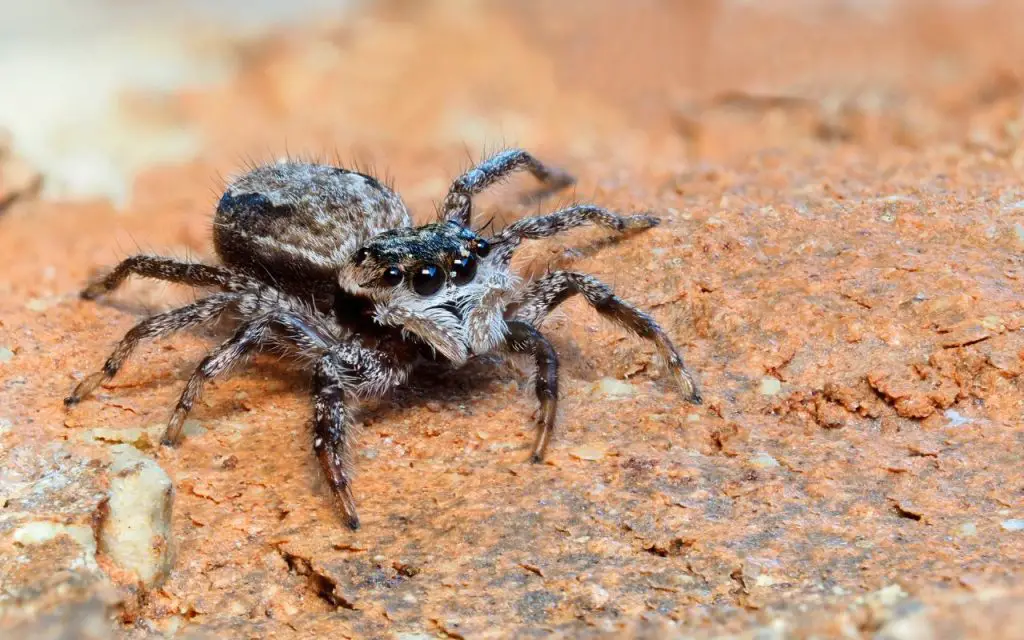
FAQ Related To Tan Jumping Spider Care
Tan jumping spiders are safe and fun to be around since they pose no threats to humans. They are beneficial as they keep your home safe from other insect infestations. I’ve answered a couple of the most common questions about the species below, but if you’d like more information, check the followinig article: Tan Jumping Spider Facts.
Does A Tan Jumping Spider Bite?
A tan jumping spider does not bite unless agitated. Again, if they attack you in defense, their venom will not cause any serious medical alarm. Most people actually say it’s just slightly more irritating than a mosquito bite. Nonetheless, you should take any bite seriously – and seek medical attention – if you notice any signs of an allergic reaction. These include hives, swelling of the face or neck, and difficulty breathing.
Do Tan Jumping Spiders Spin Webs?
Unlike other spider species, tan jumpers do not spin webs to catch food. Instead, they sit still and wait to pounce on their prey at the first chance they get. What you will notice, however, is that a pet jumper will often make a kind of silk hammock to sleep in. Often, the make this in the part of their enclosure where they feel safest, and will retreat to it to molt or when they need rest.

